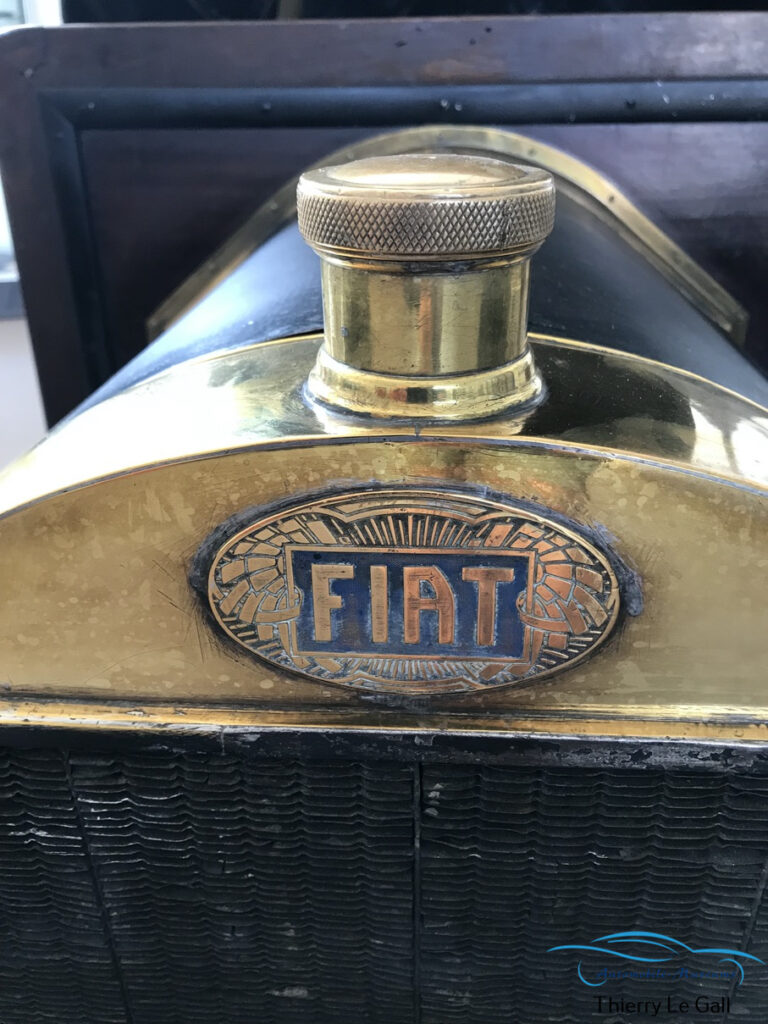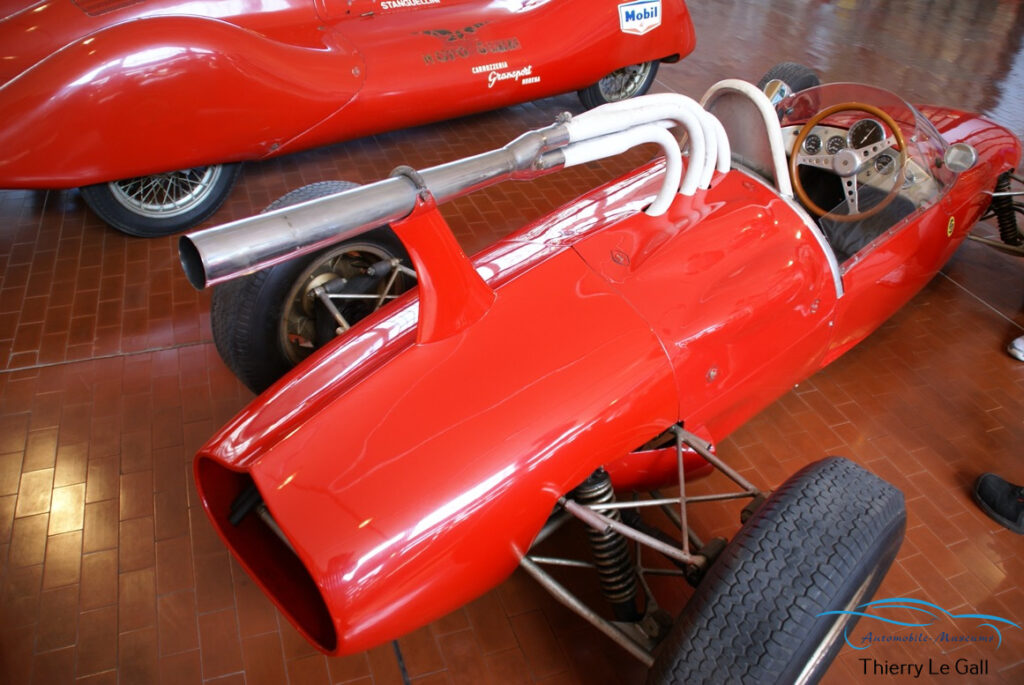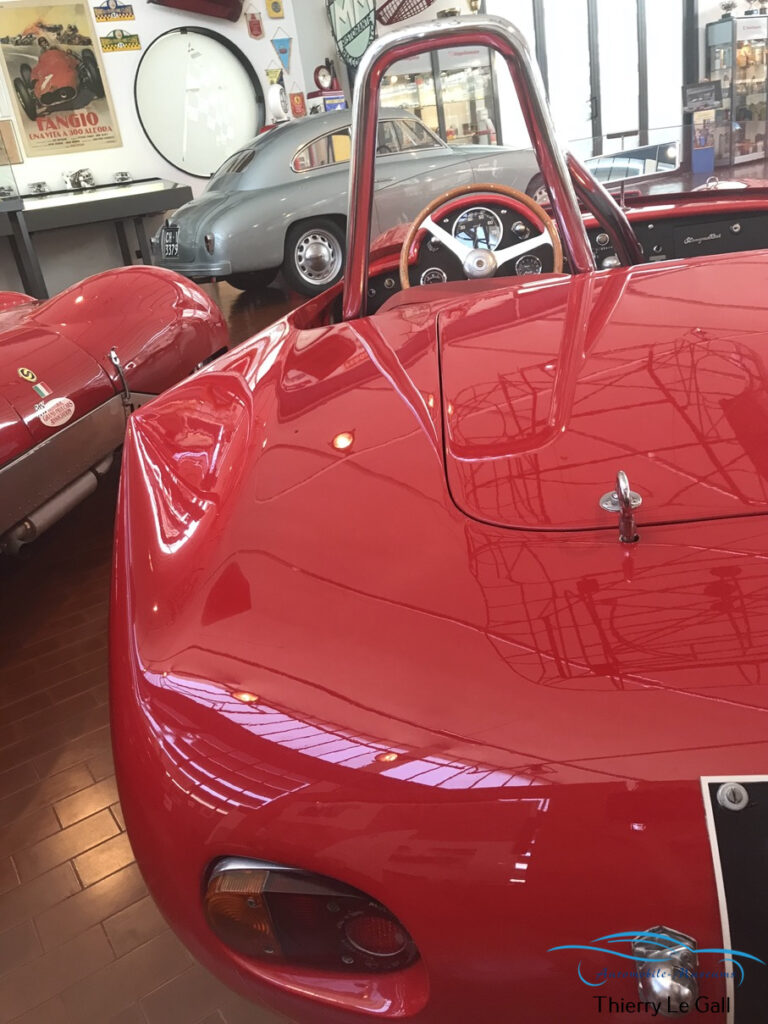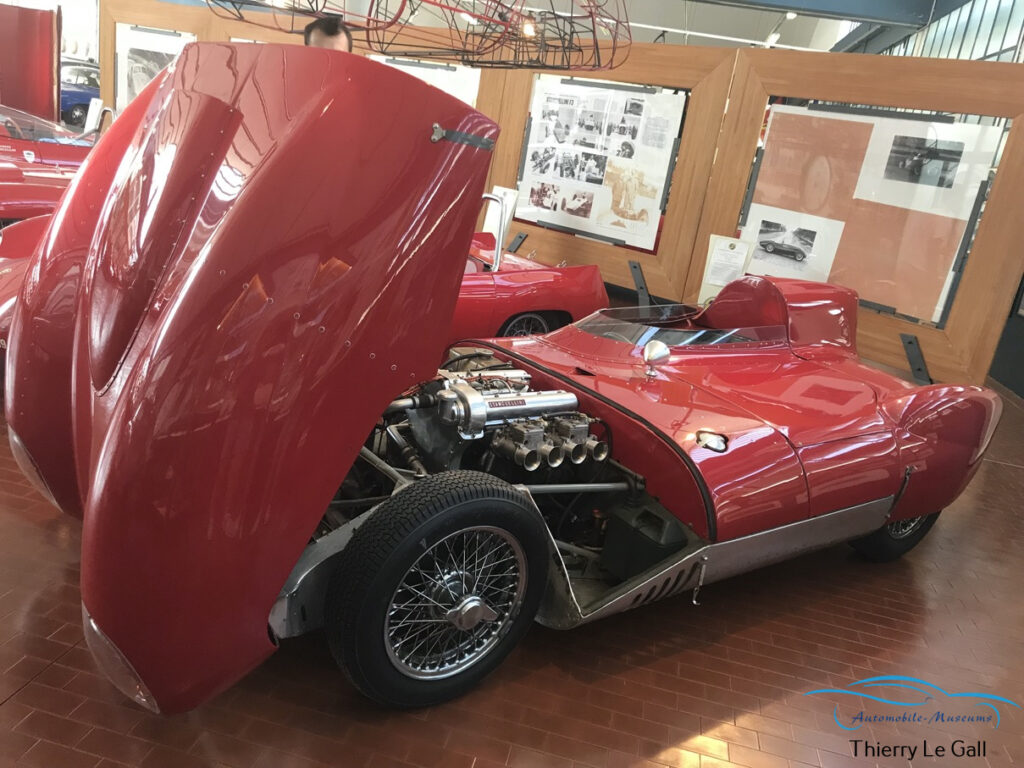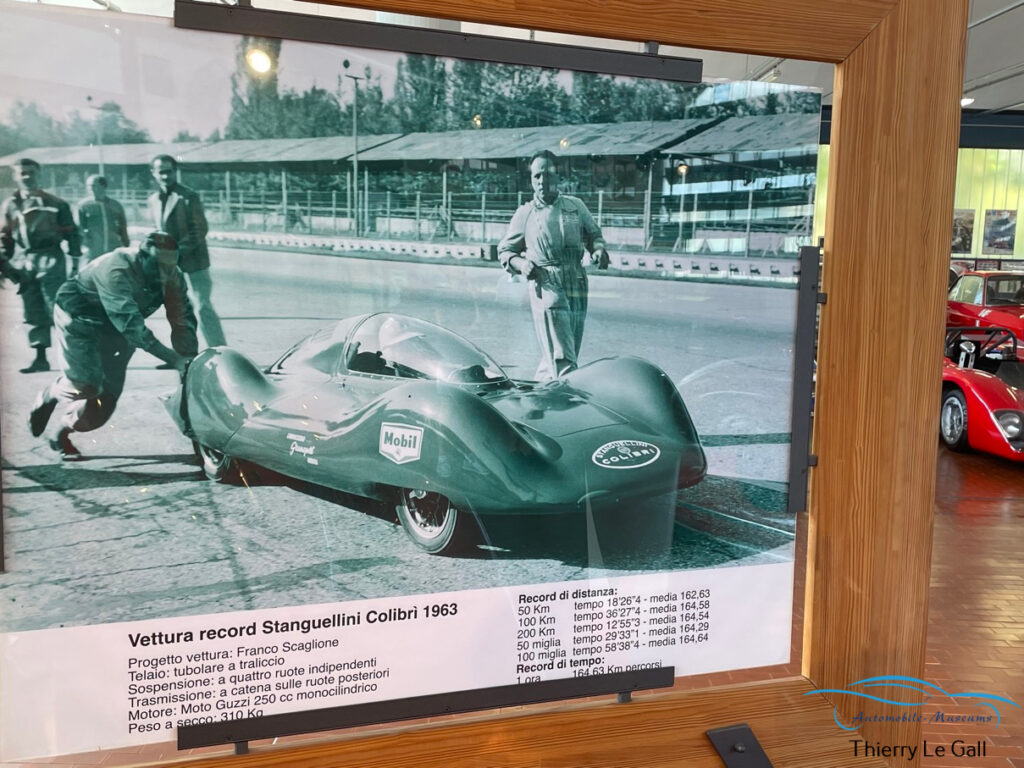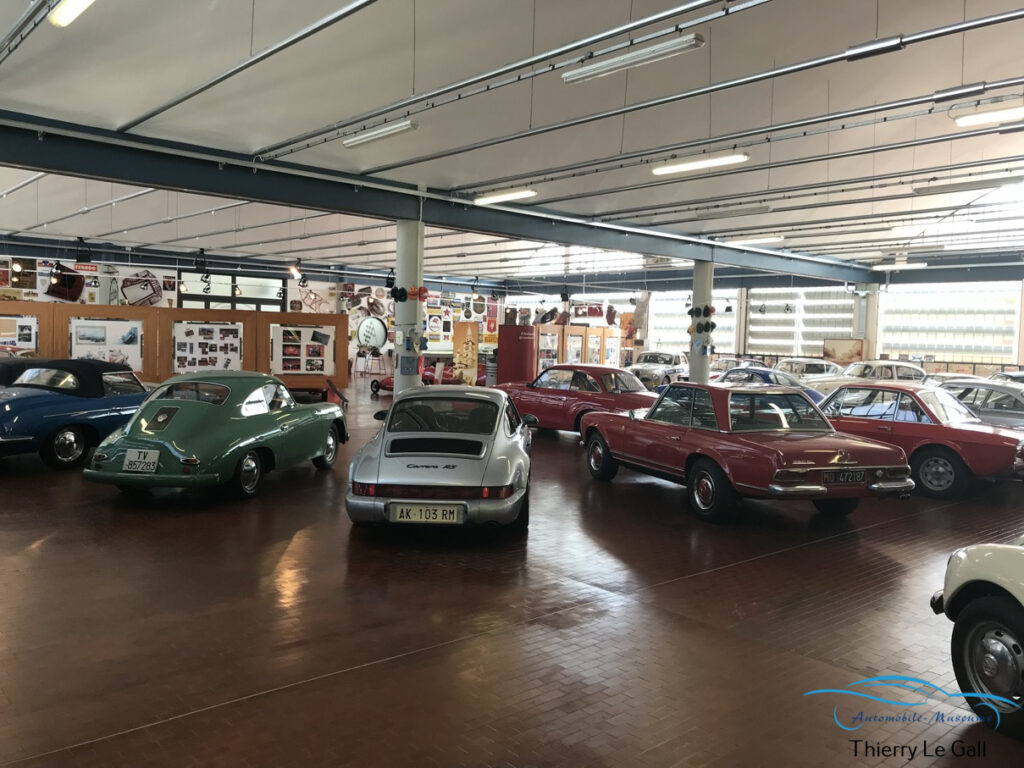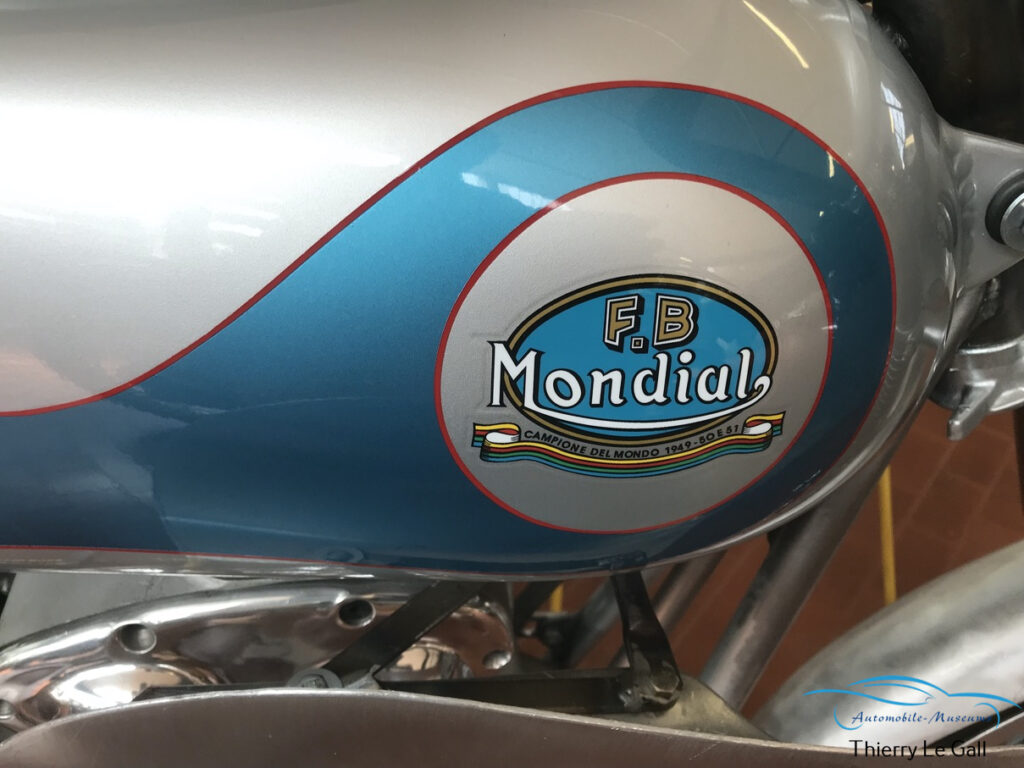
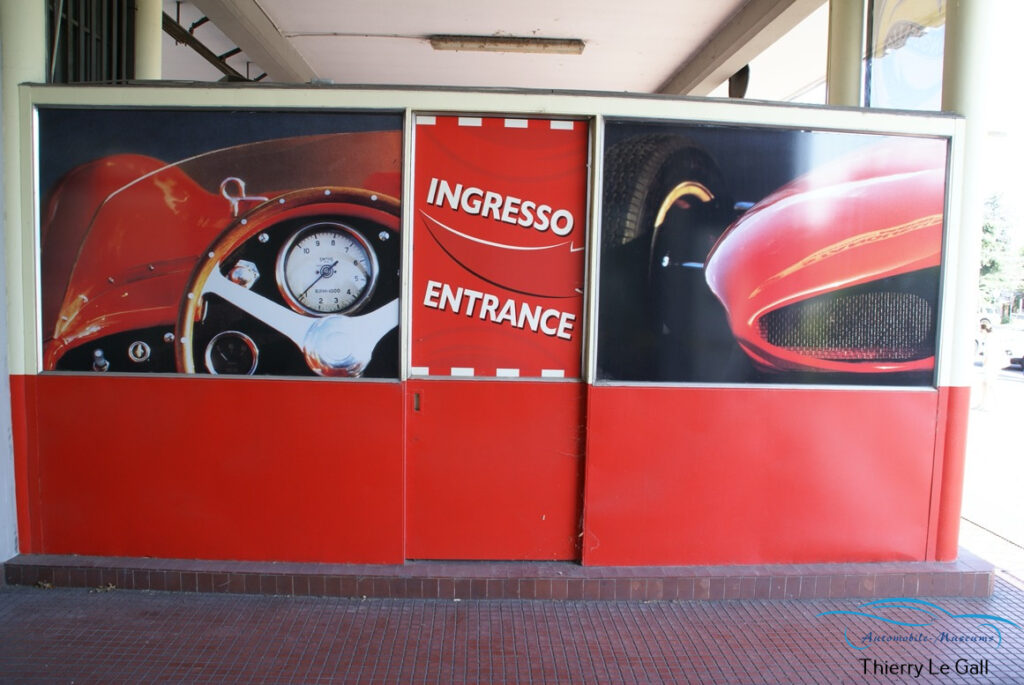
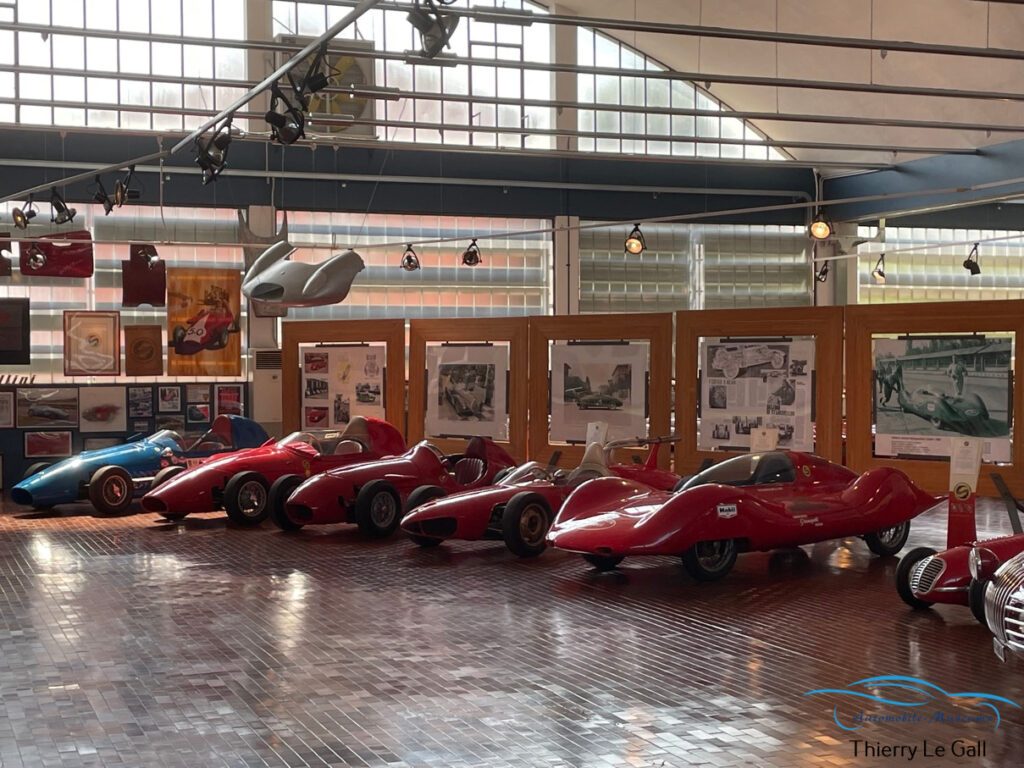
Introduction
Car enthusiasts visiting Emilia Romagna, the region of the cities of Modena and Bologna, will naturally think of the Ferrari and Lamborghini museums… But on the way out of Modena, don’t miss the Stanguellini Museum, which pays tribute to family history, and in particular to Vittorio Stanguellini, a mechanical wizard, preparer, builder and team boss who enjoyed a period of sporting and commercial success from the 1930s to the 1960s. Francesco, Vittorio’s son, opened the museum in 1996 to perpetuate his father’s memory. It is his daughter Francesca who now watches over the family legacy and in particular this beautiful museum that we are going to discover. The museum is divided into 3 parts, the historic hall, Vittorio’s production and the family’s cars.
My Favorites
Lots of exceptional, rare, even unique cars at the Stanguellini Museum. It’s hard to choose, but here are my favorites:
- The Delfino, original and pretty Junior Formula
- The Colibri of speed record, symbol of an era of speed-seeking
- The Maserati Khamsin, for me one of the most beautiful Maserati GTs


The Stanguellini Story
The family history begins at the end of the 19th century with the invention by Celso Stanguellini of a tensioning system for drums. When his son Francesco inherited the company, he quickly decided to devote himself to mechanics, first bicycles, then motorcycles and cars. He also participates in motorcycle and other 3-wheeler races. In 1910, he was the first to register a car in Modena (a FIAT), and became the Fiat dealership of Modena, one of the first in Italy. The garage from 1912 and enlarged several times, is still an urban landmark of Modena (via Bartolomeo Schedoni), with its 2-storey brick FIAT sign. When Francesco died in 1932, his son Vittorio, who was only 22 years old, found himself at the head of the company. Passionate about mechanics and talented, he began modifying cars and preparing their engines, first based on Fiat, then Alfa Romeo and Maserati. As its reputation grew rapidly, enthusiasts came from all over Italy to have their cars prepared. From 1936, this activity became a business in its own, alongside the Fiat dealership, which continued to develop. In 1937, Vittorio launched the Squadra Stanguellini. His drivers were racing on improved Fiats and Maserati prepared by Vittorio, or on FIAT-powered Stanguellini barchettas built for the 750cc and 1100cc classes. The Squadra Stanguellini won races and podiums, including the 1937 Targa Florio, which further increased Vittorio Stanguellini's reputation. In the 1950s and 1960s, Stanguellini built racing cars, single-seaters and sports cars, and developed his own engines. The many victories in Europe and even in the United States ensure the success of the manufacturer. Stanguellini also built a few touring models, notably with Bertone. In the mid-1960s, competition became more fierce, Fiat engines lacked power in the face of competition in Formula 3, and the manufacturer's activity stopped at the end of the 1960s. Vittorio Stanguellini died at the end of 1981.
Entrance hall
The tour begins with a large area dedicated to historical references. The drum patented by Celsio Stanguellini, the beginning of the industrial adventure, is installed next to the Fiat Tipo 1 of 1908 with its original “1 MO” plate, the first car registered in Modena by Francesco Stanguellini in 1910. It is in perfect running conditions, maintained by the technical team. As you might expect, starting engine requires several delicate operations, and driving requires great caution, with limited brakes and a lot of weight. The Fiat dealership activity of the Stanguellini family is recalled by Fiat 1100 (type 103).





The hall is decorated with large posters of the emblematic Stanguellini models, photos, posters, drawings of famous drivers… A display case shows objects that belonged to Francesco, Vittorio’s son, and a racing driver.
The Stanguellini production
The 2nd part of the museum is dedicated to Vittorio Stanguellini’s productions, so mainly racing cars. Fortunately, the family was able to keep a dozen cars from this period, representative of Stanguellini production between 1947 and the mid-1960s. They also try to expand the collection when opportunities arise. The decoration is made up of many photos, posters, period posters, enameled plaques. There are many photos of races, as well as several photos of Juan Manuel Fangio, Vittorio’s great friend. Enzo Ferrari, with whom Vittorio Stanguellini had good neighbourly relations, especially since they were not really in competition, is also present. Display cases present all kinds of objects related to racing: engine parts, historical documents, tools, trophies… Among the curiosities, a petrol tank in the shape of a seat, in order to make the car as light as possible. The pilot was therefore directly seated on the fuel, efficient but beware of shocks!




Single-seaters
After the war and until the 1960s, Vittorio Stanguellini specialized in light single-seaters and small sports cars, powered by original Fiat engines from 750cc to 1100cc. It is in the vein of craftsmen such as Abarth or Gordini. The engines were prepared for racing, and Vittorio developed double ACT (Overhead Camshaft – Bialbero in Italian) cylinder heads for Fiat engines in order to gain power. In 1950, he took another step forward and designed his 750cc and 1100cc engines from scratch, still with double OHC cylinder heads using aluminium to make them lighter.
Single-seaters and sports cars often use the same chassis-engine combination and share many other parts. In the immediate post-war period, Stanguellini single-seaters raced in Grand Prix, which was very different from today’s F1 Grand Prix. Stanguellini won many races, the story says that not a Sunday goes by without a Stanguellini victory on a circuit! After the FIA (Fédération Internationale de l’Automobile) structured the categories (height, weight, displacement, etc.), the Stanguellini raced in the Formula Junior and F3 categories. The manufacturer became one of the major players in Formula Junior internationally, producing more than a hundred cars, and winning numerous national championships.




The single-seaters of the 1950s still have the engine at the front, as seen on Formula Junior and F3 cars. Wire wheels, rather enveloping bodies due to the position of the engine, we also note the first appearances of aero devices, with 2 small flat fins behind the front wheels. A major change came in 1961 with the Delfino, a mid-engined Formula Junior, whose exhaust was positioned in an original way well above the engine. The chassis is tubular, and the car owes its name to its bow with its 2 openings intended for cooling the radiator.



Fangio was happy to help set up the cars when he passed through Modena, and he suggested to Vittorio that he gives his car a more “nasty” look to impress the opponents when they saw the car in their mirrors. Despite its innovative design and excellent chassis, the Delfino was handicapped by the low power of the FIAT engine. Vittorio Stanguellini refused to use foreign engines, which limited the success of this beautiful single-seater.
Another significantly smaller single-seater is also on display, a car built by Vittorio in 1948 for his son Francesco, inspired by the Grand Prix Maserati 4 CLT and equipped with a small Vespa engine. Enough to inspire a passion for cars and competition from a very young age!


Sport racing cars
At the same time, and from 1947, Stanguellini developed sports racers using 750cc and 1100cc engines, on revised FIAT basis. Sharing many elements with single-seaters, these barchettas roamed the races of their categories all over Europe, on the circuit and hill climbs. The 1947 1100 Sport had 77hp. This car, owned by Giovanni de Filippi, took part in the Mille Miles. It is particularly recognizable with its many chrome strips on the front and on the bonnet, and its small windscreen that hugs the rounded shapes of the bonnet. With the “Bialbero” engines, the power increased to 90 hp for the 750cc, and almost 100 hp for the 1100cc.


Light (400 kg) with its tubular chassis and aluminum bodywork, the 750 Bialbero could exceed 200 km/h. We can also notice that Stanguellini pushed the lightening to the maximum, going so far as to drill some supports to save weight!




Two cars on display are not 100% homemade. A 1957 Lotus Mk-11 slipped into the lineage, its British driver Alex McMillan deciding to have the Coventry climax replaced by the Stanguellini 1100cc double OHC, winning many races in England. At the front of the bonnet, the Lotus logo is surrounded by the indication “Transformazione Stanguellini”.



The other is a Stanguellini-SEFA. Vittorio dreamed of winning the 24 Hours of Le Mans (in his category, of course), and in the 1950s he regularly took part in the great Le Mans classic without succeeding. In 1958, he teamed up with SEFA, a French company, to adapt an independent wheel suspension system. The car is very light at 420kg, and its 740cc “Bialbero” engine delivers 95 hp to reach speeds of almost 200 km/h. Unfortunately, the car did not have the success hoped for.
Speed Records
In the 1950s and 1960s, technical developments in chassis and engine opened up prospects for performance, and breaking speed records in different classes of car and displacement was a thriving racing activity. To tackle speed records, Stanguellini developed the Colibri: light (310 kg) and streamlined (all-aluminium Scaglione bodywork), powered by a small 250cc Guzzi single-cylinder engine developing 29 hp placed at the front! The structure is minimalist, the steering wheel seems more intended to allow the pilot to hang on than to steer the machine! In 1963, the Colibri broke 6 world records in its category on the Monza speed oval, including the average of 164kmh (above 100 mph) on 200km!




Tourism
Vittorio Stanguellini was also interested in passenger cars. In association with Bertone, he developed the Stanguellini 1100 Berlinetta, a small 2+2 coupé based on a Fiat base. With a reworked chassis, aerodynamic bodywork by Bertone (design by Franco Scaglione), a low weight (around 700 kg), a Fiat 1100 cc engine revised by Stanguellini developing up to 95 hp, the car performed well, and several cars were entered in road races such as the Targa Florio or the Mille Miglia. Several body versions, 2- or 4-seater coupes, were offered between 1948 and 1953. The model on display at the museum is a 1948 4-seater coupe. In total, Stanguellini produced about a hundred units of this model.




It should be noted that Vittorio Stanguellini also worked on a Spider 1200 called “America”, designed by Bertone in a rather flamboyant style, but which remained a unique example. The last touring car Stanguellini worked on was the Momo Mirage in 1971, a project initiated by an American industrialist of a large 2+2 coupé elegantly designed by Frua, equipped with a modified Chevrolet V8 engine. A few prototypes were built and presented at trade fairs, but no production was launched. These cars are now in private collections.
The Family Collection
A great car lover and driver, Francesco (Vittorio’s son) had built up a beautiful collection of cars, quite eclectic in terms of categories and performances, which are presented in the 3rd part of the museum. This part of the hall is also decorated with large posters, photos, trophies and enameled plaques. Lots of Italians cars, but not only. With a few exceptions, they are all sport cars! This collection alone is worth a visit, having nothing to envy to many museums. The visit below is not exhaustive…






The Italian cars
The collection naturally contains a lot of Italian cars, including many national icons. Given the family history, Fiat is logically well represented in the collection, with some popular cars such a Fiat Topolino and a Fiat 600 from 1958, but also some sports cars of the Turin brand. The 1965 2300 S coupe was driven by Francesco Stanguellini. Rarer and sportier, the Fiat Dino 2400 cabriolet was equipped with the Ferrari Dino V6 which also equipped the Dino 246, the first mid-engined Ferrari (even if it did not have the name). On the convertible, elegantly designed by Pininfarina, the engine is at the front. Just over 400 units were produced. Without being a prestigious sports car, the Fiat 128 Rally presented in 1971 was a kind of GTi before its time.



The Alfa Romeo 1900 Super was also driven by Francesco Stanguellini in historic races. The Alfa Romeo Giulietta Sprint is a sporting icon of the 1960s, here in its “classic” but race-ready dress, and a “Speciale” version from 1961, a rarer example with a beautiful Bertone body designed by Scaglione and derived from the famous BAT (Berlinetta Aerodinamica Technica) studies. The Giulia Sprint, a coupé derived from the eponymous saloon, succeeded the Giulietta, and remains today an Alfa that is highly sought after by enthusiasts. More recent, the Alfa Romeo 4C (2013) is distinguished by its intensive use of carbon to remain light.

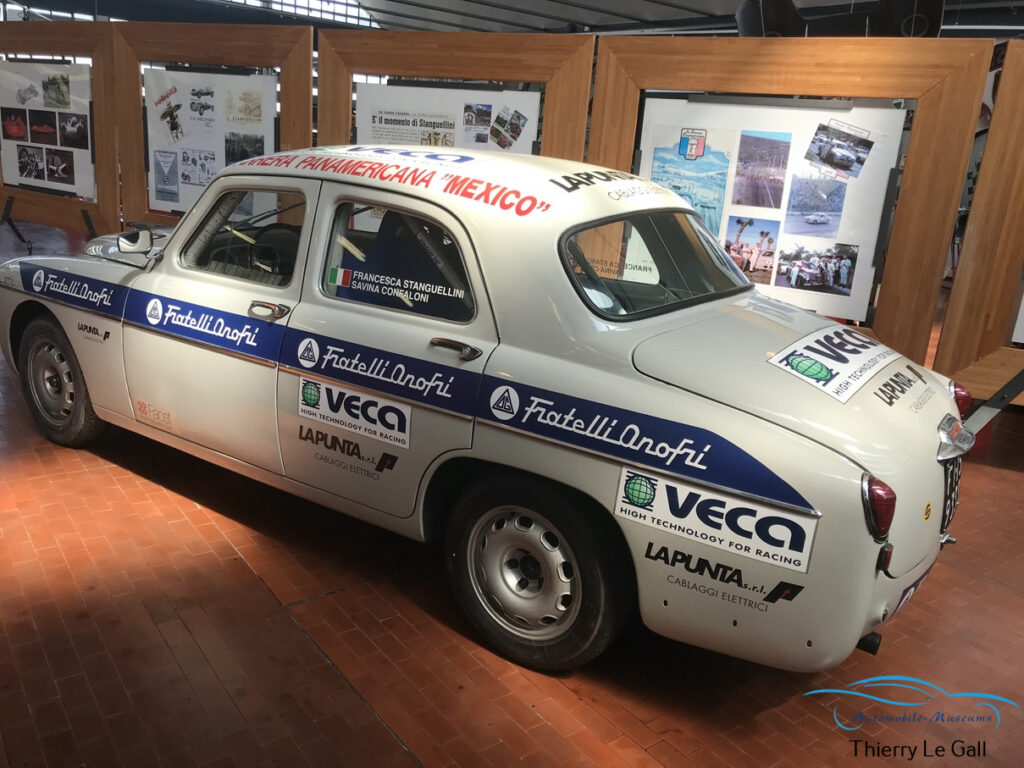

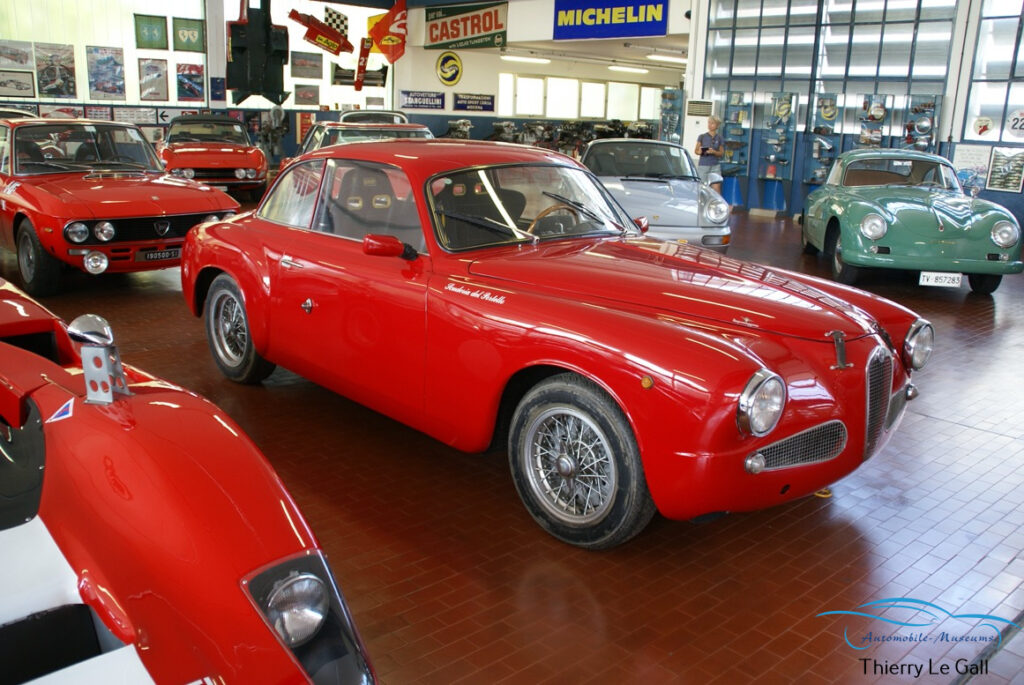
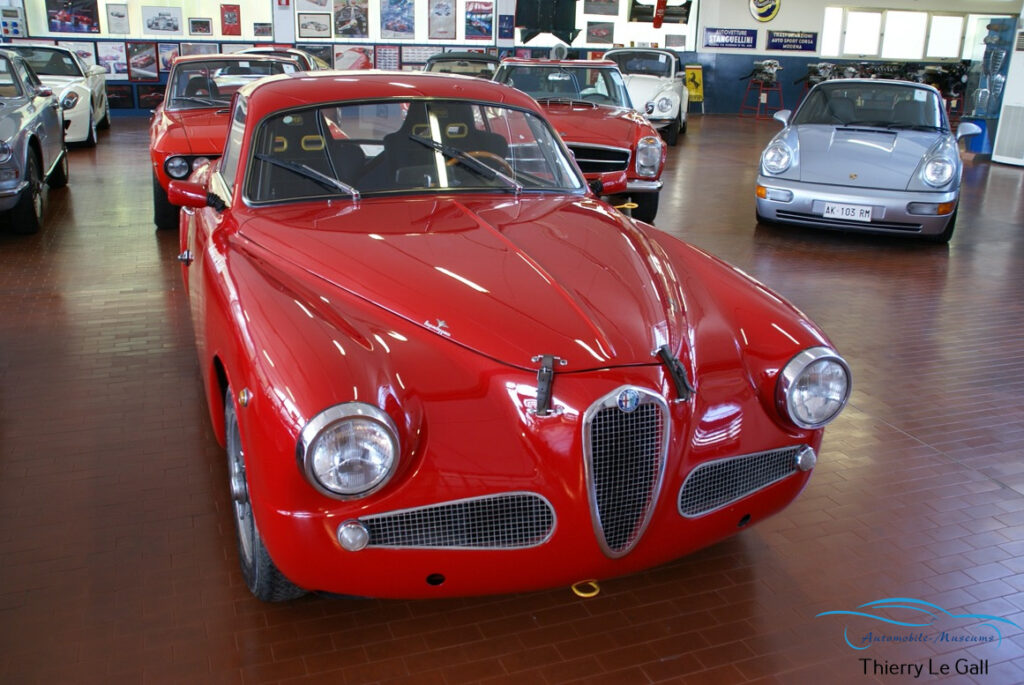
Lancia is represented by 2 icons of the brand, an Aurelia from the 1950s, the world’s first production car equipped with a V6, and formidable in the rallies of that era. The Lancia Fulvia of the 1970s, a pretty little coupé with a very feminine line, was also a formidable rally machine in its HF versions and won numerous victories and world titles.



The Maserati on display represent 2 generations of the Modena firm, with the Sebring and the Khamsin. The Sebring is an elegant 2+2 coupé from the 1960s, one of the last Maserati equipped with the famous in-line 6-cylinder. The Khamsin is a very beautiful GT from the late 1970s, designed by Marcello Gandini for Bertone, equipped with the in-house 4.9L V8 delivering 320 hp, perhaps one of the most beautiful GTs produced by Maserati. Unfortunately, the Khamsin suffered from the troubled times of the 1970s at Maserati and would only be produced in just over 400 units.
Last but not least, 2 very different Ferraris are on display, a 512 BB (Berlinetta Boxer), with a mid-engine 12-cylinder boxer, and a 612 Scaglietti, a large GT coupé with a V12 engine at the front.
The German cars
2 mythical convertibles are from German production with a VW Beetle and a Mercedes 250 SL (1967), the famous “pagoda” designed by Paul Bracq which preceded the 280 SL. More sporty, the Porsche triplet on display is a remarkable selection of Stuttgart productions. The origins of the myth can be found with 2 Porsche 356, a 1958 Model A coupé and a 1959 B in roadster version. The 3rd Porsche is a 1992 911 type 964, but in an RS version, the extreme road 911 in the Porsche range, a barely “civilized” racing car.



The English cars
Jaguar could not be absent from such a collection of iconic sports cars. There are 3 emblematic models of the brand. The XK150 roadster is the last of the XK lineage of the 1950s, derived from the racing C-Type and D-Type and which becomes a true GT without sacrificing its performance. In the early 1960s, the Mk2 was a large and beautiful saloon, whose many successes in competition, both on the track and in rallying, ensured its reputation and a place in the automotive pantheon. In a way, it is the ancestor of today’s sports sedans, BMW M, Mercedes AMG or Audi RS…





And of course, there’s an E-Type, one of the most beautiful body design in automotive history, in this case a 4.2L 6-cylinder coupe. Still on the English side, another roadster with the Austin Healey 100. The first model of the cooperation between Austin and Donald Healey, the “100” of its name refers to its ability to exceed 100 mph (160 km/h), a great performance for the 1950s. Finally, a Lola T212 that belonged to Scuderia Filipinetti, the famous Swiss team, a car that competed in the European Sport 2L championship in the 70s, as well as hill climbs.
Motorcycles, a tribute to Danilo Tavoni
Danilo Tavoni, nicknamed “Golden Hand” by Enzo Ferrari, worked for more than 15 years with Vittorio Stanguellini, specialising in bodywork, shaping and sculpting metal, before going to Lamborghini. At retirement, he opened his workshop, specializing in the creation of replicas of MV Agusta. One corner of the room pays tribute to this precious collaborator of Stanguellini.




We see some of his creations, and different stages of his work. Some owners of MV Agusta motorcycles are reluctant to use them given the price of these bikes, so Danilo built identical replicas for them, with a Kawasaki engine, to ride daily.
Engine & Tooling
In one corner of the exhibition hall, there is a series of engines placed on trestles: Stanguellini of course, but also Fiat, Jaguar, Ferrari, Maserati… As a follow-up, a series of large tools developed by Vittorio shows another side of this multi-talented man. Indeed, when he could not find the tools he needed on the market, Vittorio did not hesitate to design and make them himself. In particular, there is a “homemade” engine test bench, which was even produced in small series for tuners and manufacturers, about a hundred coming out of the Stanguellini workshops.
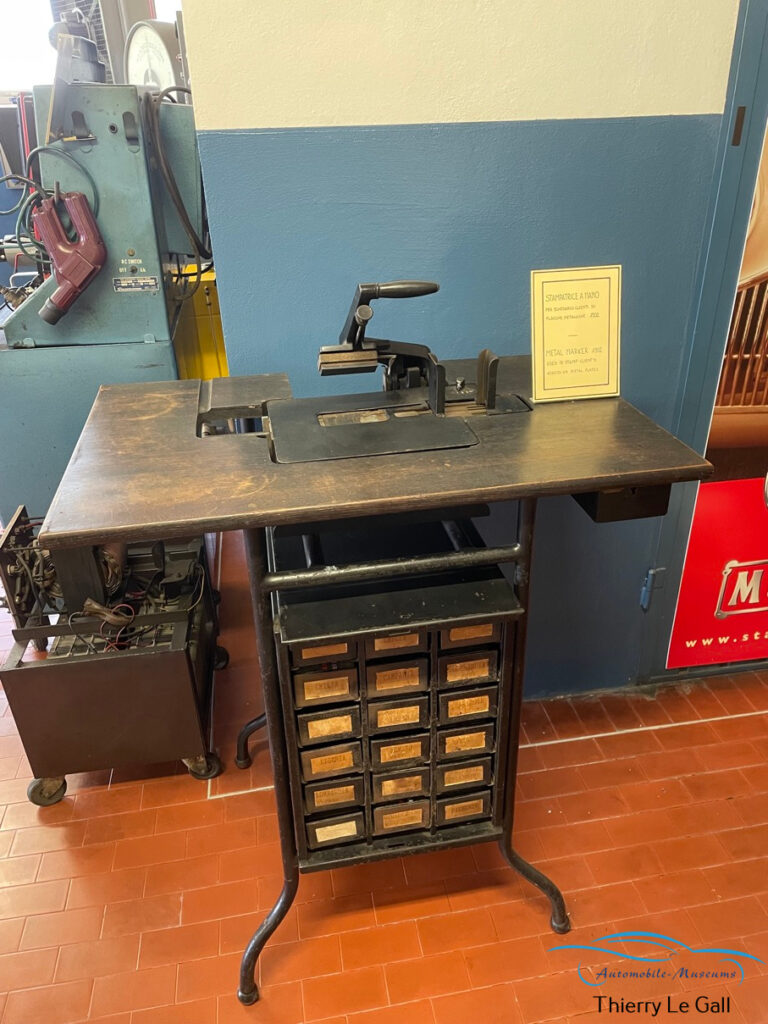




Conclusion
Less well-known than Ferrari or Lamborghini, less so than Abarth, which benefited from its association with Fiat, Stanguellini represents an important page in Italian sports cars. This museum, which pays tribute to the history of this family, is well worth a visit. For more details on the opening hours and conditions of the visit (in Italian or English), see the Automobile-Museums website…
The photos on this page belong to Automobile Museums, no right of reproduction without the express permission of the platform.
Museums are living places, and therefore the content or layout may have changed between the publication of this article and your visit. The layout may be different, cars may be absent (overhaul, maintenance, loan…) and new ones may have been joined the exhibition.

